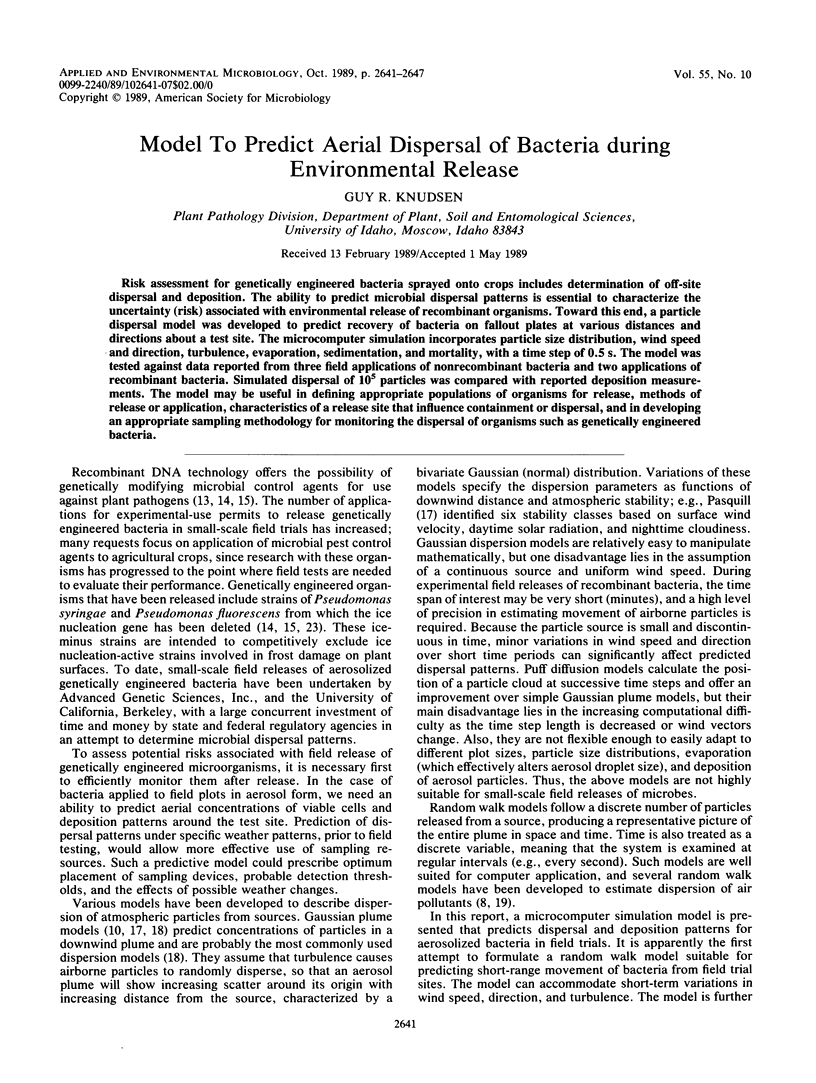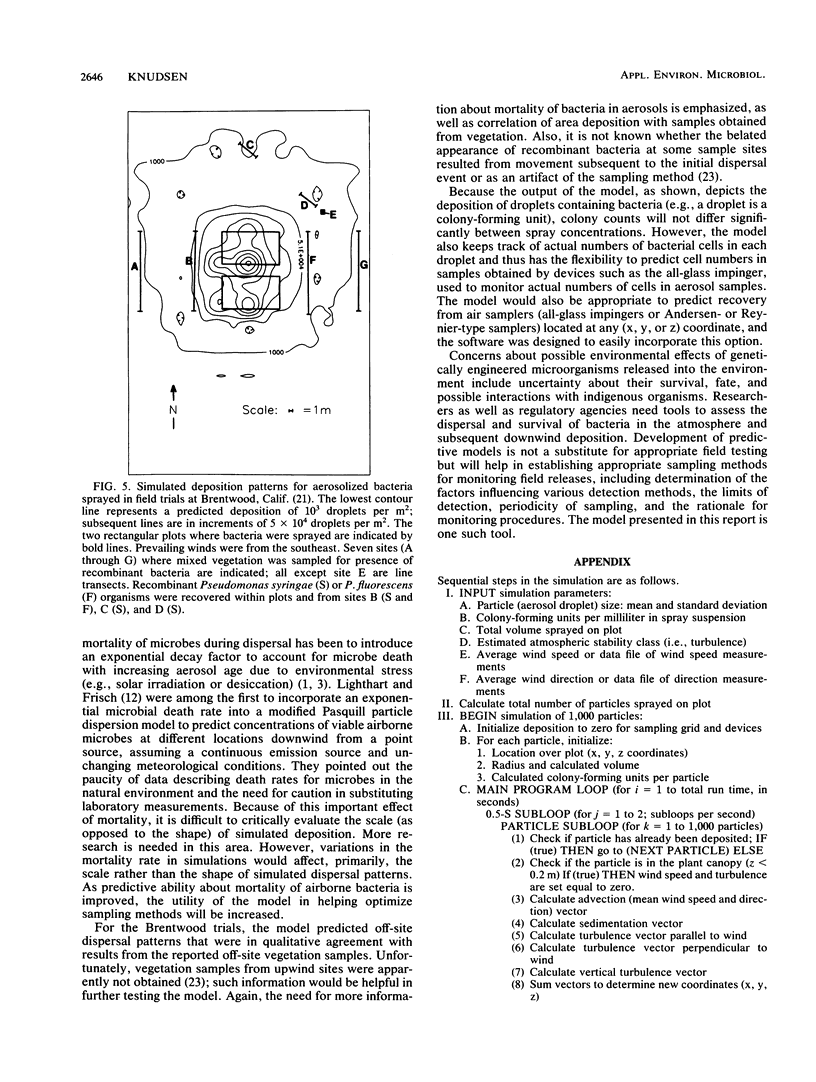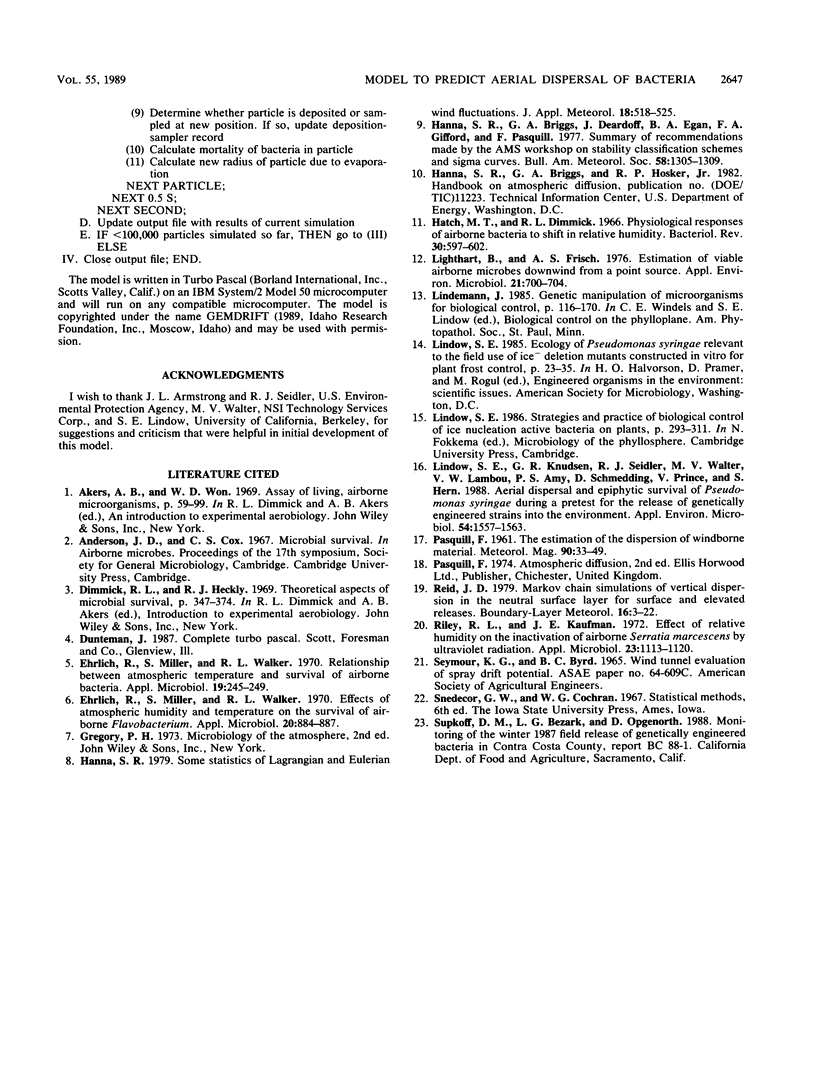Abstract
Risk assessment for genetically engineered bacteria sprayed onto crops includes determination of off-site dispersal and deposition. The ability to predict microbial dispersal patterns is essential to characterize the uncertainty (risk) associated with environmental release of recombinant organisms. Toward this end, a particle dispersal model was developed to predict recovery of bacteria on fallout plates at various distances and directions about a test site. The microcomputer simulation incorporates particle size distribution, wind speed and direction, turbulence, evaporation, sedimentation, and mortality, with a time step of 0.5 s. The model was tested against data reported from three field applications of nonrecombinant bacteria and two applications of recombinant bacteria. Simulated dispersal of 10(5) particles was compared with reported deposition measurements. The model may be useful in defining appropriate populations of organisms for release, methods of release or application, characteristics of a release site that influence containment or dispersal, and in developing an appropriate sampling methodology for monitoring the dispersal of organisms such as genetically engineered bacteria.
Full text
PDF






Selected References
These references are in PubMed. This may not be the complete list of references from this article.
- Ehrlich R., Miller S., Walker R. L. Effects of atmospheric humidity and temperature on the survival of airborne Flavobacterium. Appl Microbiol. 1970 Dec;20(6):884–887. doi: 10.1128/am.20.6.884-887.1970. [DOI] [PMC free article] [PubMed] [Google Scholar]
- Ehrlich R., Miller S., Walker R. L. Relationship between atmospheric temperature and survival of airborne bacteria. Appl Microbiol. 1970 Feb;19(2):245–249. doi: 10.1128/am.19.2.245-249.1970. [DOI] [PMC free article] [PubMed] [Google Scholar]
- Hatch M. T., Dimmick R. L. Physiological responses of airborne bacteria to shifts in relative humidity. Bacteriol Rev. 1966 Sep;30(3):597–603. doi: 10.1128/br.30.3.597-603.1966. [DOI] [PMC free article] [PubMed] [Google Scholar]
- Lighthart B., Frisch A. S. Estimation of viable airborne microbes downwind from a point source. Appl Environ Microbiol. 1976 May;31(5):700–704. doi: 10.1128/aem.31.5.700-704.1976. [DOI] [PMC free article] [PubMed] [Google Scholar]
- Lindow S. E., Knudsen G. R., Seidler R. J., Walter M. V., Lambou V. W., Amy P. S., Schmedding D., Prince V., Hern S. Aerial Dispersal and Epiphytic Survival of Pseudomonas syringae during a Pretest for the Release of Genetically Engineered Strains into the Environment. Appl Environ Microbiol. 1988 Jun;54(6):1557–1563. doi: 10.1128/aem.54.6.1557-1563.1988. [DOI] [PMC free article] [PubMed] [Google Scholar]
- Riley R. L., Kaufman J. E. Effect of relative humidity on the inactivation of airborne Serratia marcescens by ultraviolet radiation. Appl Microbiol. 1972 Jun;23(6):1113–1120. doi: 10.1128/am.23.6.1113-1120.1972. [DOI] [PMC free article] [PubMed] [Google Scholar]


